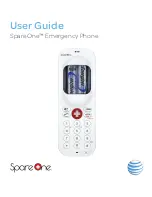
Quick user guide
Helpy GSM
Issue 1.00
Page 26
HOW TO USE (alarm call receiving)
Alarm call to a alarm receiver (ESSETI, P100)
The emergency phone should send a call to an always busy call center as defi ned by
the EN81.1-2 standard for lift emergency call systems. As alternative also normale
phone or mobile phone can be used to receive the alarm calls. A list with all the call
centers provided with a proper alarm receiving equippmente can be found on
www.
rocom-gmbh.de
.
Alarm call to a normal phone (DTMF)
The instructions on the following pages are to receive alarm calls using a phone
capable with DTMF dial functionality. In this case the dial pad is used to comand the
connection and acknowledge the alarm call.
PLEASE NOTE!
All phone used to receive the alarm calls must have a marked dial pad as
required. Also they must be clearly identifi ed that they are used to receive
emergency calls.
The incoming emergency calls are identifi ed as such by a specifi c message. This will
be played just after answering the call. After hearing to the message the following
functions are available:
1. Acknowledge the call by pressing the key
4
. The speech connection will be
activated.
2. After the call answer and the message advising the emergency call an identifi cati-
on message will be played. With the key
1
you can let play this message again.
3. If after the call answer no more keys will be pressed the call will be terminated
automatically after 3 minutes. You will get an advice tone 30 seconds before this
time expires. Pressing again the key
4
, the call can be prolungated for another
3 minutes.
4. The call can be terminated by pressing the key
0
. This will also terminate the
call sequence.
5. As an alternative to the call end by the receiver also a "call end after liberation"
can be used. In this case the call will be set on hold by using the key
5
. The alarm
status will be now active also after hanging up the phone (yellow LED will lit) until
liberation is done. In this status the calling speaker phone can be called any time
directly without any further procedure. After liberation this has to be signalized by
dialing
*0##0
from the machine room phone. Now a new alarm call is
send to the original receiver which can now defi nitly terminate the call by pressing
the key
0
.
If the alarm receiving party doesn't answer the call within 30 seconds, it is busy
or does hang up an aswered call without sending the termination code (i.e. if the







































